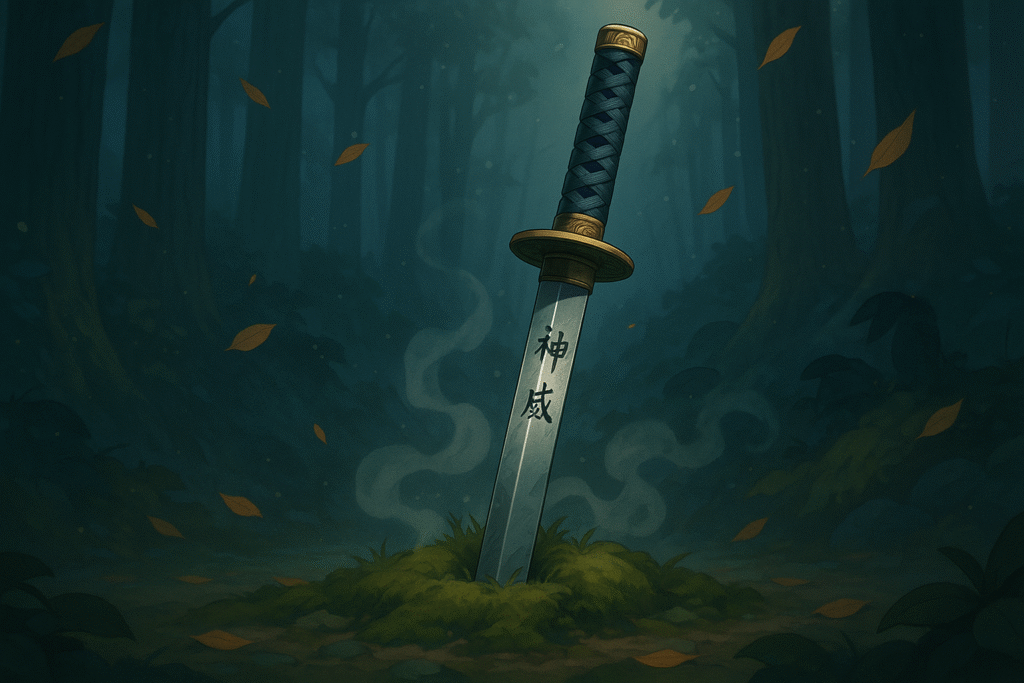For centuries, Ama divers in Japan have braved the ocean depths, free-diving without modern equipment to harvest seafood, pearls, and seaweed. This remarkable tradition, predominantly carried on by women, represents a unique maritime heritage that blends skill, endurance, and deep spiritual ties to the sea. In this article, we’ll explore the fascinating world of Ama divers in Japan, their history, techniques, cultural significance, and how they are adapting to the modern world.
The History of Ama Divers in Japan
The tradition of Ama (海女), meaning “sea women,” dates back over 2,000 years. Historical records, including references in the Man’yōshū (the oldest existing collection of Japanese poetry, compiled in 759 CE), describe these free-diving fisherwomen who collected shellfish, seaweed, and abalone.
Originally, both men and women practiced this form of diving, but over time, women became the primary practitioners. This is partly because women’s bodies retain heat better in cold water due to a higher fat percentage, allowing them to dive for longer periods. The work of Ama divers in Japan was essential in coastal communities, as they provided food and valuable resources like pearls, which became particularly important in the 19th century with the rise of Mikimoto pearl farming.
Where to Find Ama Divers in Japan Today
Although the number of Ama divers has drastically declined over the past century, the tradition remains strong in certain coastal areas of Japan. Some of the most well-known locations include:
1. Mie Prefecture (Ise-Shima Region)
- Toba and Shima are home to the largest remaining Ama diving communities.
- These divers still harvest abalone, seaweed, and seafood, and some work in Mikimoto Pearl Island, where the cultured pearl industry began.
2. Chiba Prefecture
- The Kujūkuri Beach area has a small but resilient community of Ama divers who continue their age-old techniques.
3. Ishikawa Prefecture (Hegura Island)
- One of the northernmost locations for Ama diving.
- Divers in this region work in colder waters, harvesting shellfish and seaweed.
4. Wakayama Prefecture
- Some small fishing villages still maintain Ama traditions.
The Life and Techniques of Ama Divers in Japan
How Ama Divers Work
Ama divers perform their work in several sessions a day, diving for 30 seconds to a minute per dive, without using oxygen tanks. They typically descend to depths of 10 to 20 meters (33 to 66 feet), with the most skilled divers reaching even greater depths.
Ama divers are categorized into two types:
- Oyogido Ama (泳ぎ度海女) – “Swimming Ama” who dive near the shore.
- Funado Ama (舟度海女) – “Boat Ama” who venture further offshore and use weighted stones to descend quickly.
After surfacing, they use a unique breathing technique called “isobue” (磯笛, sea whistle)—a sharp exhalation followed by deep breaths to expel CO₂ and recover quickly before the next dive.
Traditional Ama Gear
- Fundoshi (ふんどし) – A traditional white loincloth, once the primary attire.
- White Garb (白装束, Shiro-shōzoku) – Adopted in the 20th century for modesty and as a symbol of purity.
- Diving Mask – Early Ama divers used no goggles, later adopting mīkagan (ミーカガン), low-volume diving goggles developed in Okinawa.
- Fins & Wetsuits – Introduced in the 1960s, allowing for longer dives and better efficiency.
Ama Diving and Cultural Significance
Shinto and Spiritual Connections
Ama diving is deeply connected to Shinto beliefs. Many Ama divers perform rituals and prayers at sea shrines before diving, seeking protection from the goddess of the sea, Benzaiten (弁財天).
Ama Huts (Amagoya, 海女小屋)
Ama divers gather in “amagoya”, small huts where they rest, warm up, and share meals. These huts have now become popular tourist attractions, where visitors can interact with Ama divers and enjoy freshly grilled seafood.
The Decline of Ama Divers in Japan
The number of Ama divers has fallen dramatically from around 17,000 in the 1950s to fewer than 2,000 today. Several factors have contributed to this decline:
- Aging Population: Many Ama divers today are over 60 years old, with some continuing into their 80s.
- Environmental Changes: Overfishing and rising sea temperatures have reduced shellfish populations.
- Alternative Employment: Younger generations have moved away from Ama diving for more stable careers.
Despite these challenges, there have been revival efforts in recent years, with a renewed interest in Ama culture as a tourist attraction and a symbol of Japan’s maritime heritage.
Ama Divers vs. Korea’s Haenyeo Divers
A similar tradition exists in South Korea’s Jeju Island, where female Haenyeo divers (해녀, “sea women”) also dive for seafood. While both share similarities, the Haenyeo divers in Korea are more organized into collectives and receive government support to preserve their traditions.
Modern Freediving and the Influence of Ama Divers
The techniques of Ama divers in Japan have influenced modern freediving, including voluntary tubal opening (VTO) for hands-free equalization and breath-hold recovery methods.
Interestingly, Jacques Mayol, a legendary freediver and the inspiration for the film The Big Blue, spent his childhood summers in Japan, where he observed Ama divers. His experiences played a role in shaping his philosophy of freediving as a meditative and spiritual practice.
How to Experience Ama Culture in Japan
If you want to see Ama divers in Japan in action, consider visiting the following places:
1. Mikimoto Pearl Island (Mie Prefecture)
- Watch live Ama diving demonstrations.
- Learn about Japan’s pearl diving history.
2. Ama Huts in Ise-Shima (Mie Prefecture)
- Enjoy freshly grilled seafood prepared by Ama divers.
- Hear personal stories from real-life Ama women.
3. Hegura Island (Ishikawa Prefecture)
- Visit one of the last communities of northern Ama divers.
4. Ama Museum (Toba, Mie Prefecture)
- A comprehensive exhibit on the history and culture of Ama divers.
The Future of Ama Divers in Japan
While the number of Ama divers continues to decline, efforts are being made to preserve their traditions. The combination of cultural tourism, environmental conservation, and media exposure is helping to keep the legacy of Ama divers in Japan alive.
Programs such as Ama tourism experiences, documentaries, and UNESCO heritage applications may offer a lifeline for future generations to continue this unique and extraordinary tradition.
Final Thoughts
The Ama divers of Japan are more than just skilled free-divers—they are living symbols of Japan’s maritime history, embodying resilience, tradition, and harmony with nature. Whether you visit an Ama hut, watch a demonstration, or dive into their history, their story remains one of Japan’s most fascinating and enduring cultural treasures.
Would you like to witness Ama divers in Japan firsthand? Plan a visit to Mie Prefecture or Hegura Island and immerse yourself in this incredible living tradition!
Discover More About Japan & Japanese Culture 🇯🇵✨
Looking for more insights into Japanese life, language, and travel? Check out these must-read articles from Wakoku:
📖 Japanese Language & Learning Resources
🔹 Mastering Japanese Alphabet Pronunciation – Learn how to pronounce Japanese characters correctly.
🔹 A Beginner’s Guide to Writing Hiragana Characters – Start writing hiragana with confidence.
🔹 Learn Japanese Kanji Basics: A Beginner’s Guide – Master the foundations of kanji efficiently.
🔹 How to Type Japanese Letters Easily – Learn to type Japanese on your keyboard like a pro.
🔹 How to Say “Hello” in Japanese: The Ultimate Guide to Japanese Greetings – Learn essential Japanese greetings and when to use them.
🏯 Japanese Culture & Traditions
🔹 Experiencing a Traditional Japanese Bathhouse – Discover the etiquette and relaxation of Japanese sento and onsen.
🔹 Essential Drinks Vocabulary in Japanese: Order Like a Pro – Learn how to order your favorite drinks in Japan.
🔹 Mastering Nature Vocabulary in Japanese: A Comprehensive Guide – Expand your Japanese vocabulary with nature-related words.
🚀 Travel & Living in Japan
🔹 The Pros and Cons of Living in Japan: What You Need to Know Before Moving – Understand the ups and downs of living in Japan.
🔹 Kyoto Illumination 2024-2025: A Magical Winter Light Experience – Explore Kyoto’s stunning winter light displays.
🔹 Spas to Visit in Osaka: A Guide to Relaxation in Osaka – Find the best spas for unwinding in Osaka.
🗻 Adventure & Exploration
🔹 Japanese Seafood Names: A Comprehensive Guide for Seafood Lovers – Learn the names of seafood in Japanese for dining and shopping.
🔹 Expand Your Japanese Fruits Vocabulary – Discover common and unique Japanese fruit names.




